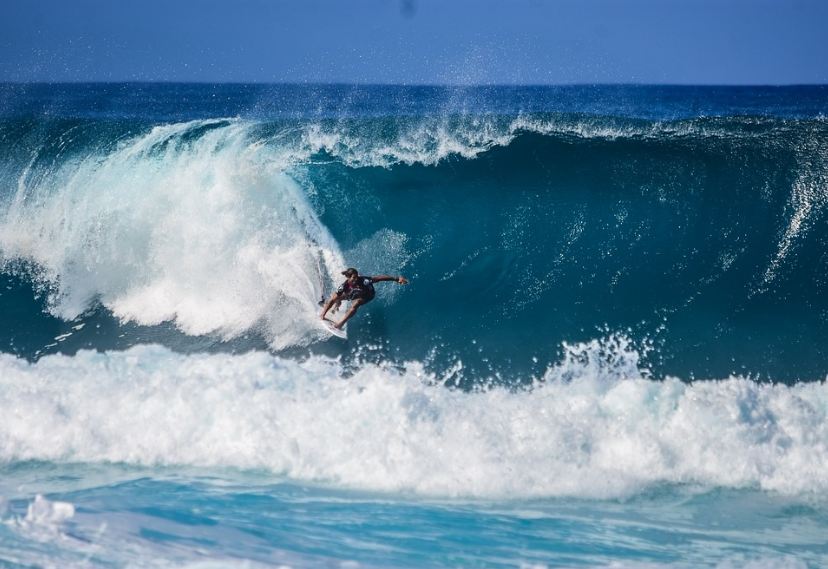What Is Paragliding Vs Parasailing?
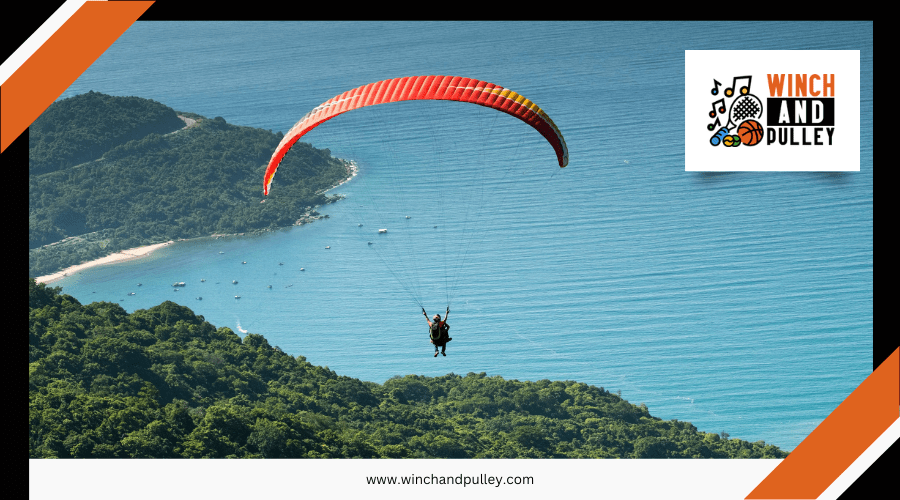
When considering aerial adventures, paragliding and parasailing might both come to mind, but they offer distinct experiences. Paragliding involves gliding freely through the sky, launching from a slope and relying on thermal currents, demanding a higher skill level and active participation. In contrast, parasailing involves being towed behind a boat, offering a more relaxed and controlled ride.
Both activities provide stunning views and a sense of freedom, but they differ significantly in terms of involvement and skill requirements. Interested in which might suit you better or what equipment and safety measures each entails? Let's explore the fundamentals.
What Is Parasailing?
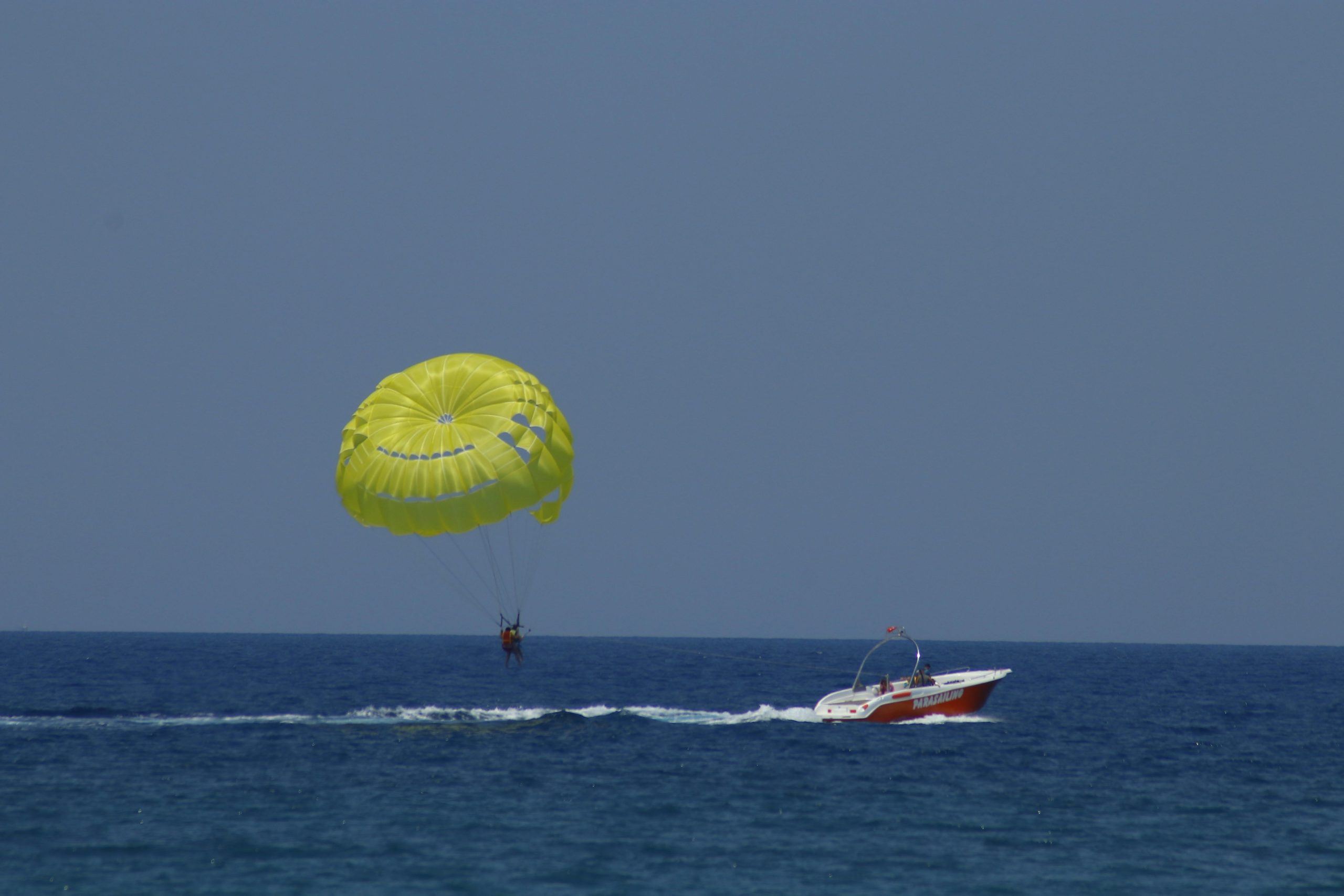
Have you ever wondered what parasailing is? Imagine being towed behind a boat while attached to a parachute-like wing, soaring up to 100 meters above the water. That's parasailing! This exhilarating recreational activity is popular at beach resorts, making it accessible to people of all ages.
You don't need any special training to enjoy parasailing. Just strap on the mandatory safety equipment, such as life jackets and helmets, and you're good to go. The boat's speed and the length of the tow rope determine how high you'll fly, giving you an unforgettable view of the ocean below.
However, parasailing isn't without its risks. Tow rope failure can occur, and adverse weather conditions can pose significant dangers. That's why it's essential to ensure all safety measures are in place before you take off. Always listen to the instructors and never attempt to parasail in poor weather.
What Is Paragliding?

Paragliding involves launching a lightweight, foot-launched glider and using thermal currents to soar through the sky. Whether you fly solo with proper training and certification or take a tandem flight with a qualified instructor, you'll experience the exhilaration of gliding over picturesque landscapes. This sport uniquely blends the thrill of flight with the tranquility of breathtaking aerial views.
Foot-Launched Adventure Sport
Paragliding is an exhilarating foot-launched adventure sport that allows you to soar through the sky, starting from a hill or mountain using a specially designed wing or glider. Unlike parasailing, which involves being towed by a boat, paragliding provides greater freedom and control to perform dynamic maneuvers and cover long distances. Originating from parachute technology in the 1960s, the sport gained popularity in the 1980s due to advancements in wing design.
Four unique elements characterize this adventure sport:
- Foot-Launch: The flight begins by running down a slope until the wing generates enough lift to carry you off the ground.
- Solo or Tandem Flights: Beginners can experience paragliding with an experienced instructor in tandem flights, while experienced pilots can fly solo.
- Safety Gear: Essential equipment includes helmets and reserve parachutes to ensure safety.
- Weather Conditions: Understanding weather conditions is crucial for a safe and enjoyable flight.
Safety is paramount in paragliding. Adequate training and proper gear are essential. Always check the weather conditions before launching to ensure a safe and thrilling experience. Happy flying!
Utilizing Thermal Currents
Paragliding offers the exhilaration of foot-launched flight, and one of its most captivating aspects is harnessing thermal currents to extend your aerial adventure. Thermal currents are rising columns of warm air that provide the lift needed for pilots to ascend to impressive altitudes. Mastering these currents allows you to soar thousands of feet above the ground, experiencing an unparalleled sense of freedom and exhilaration.
Modern paragliders have evolved significantly from basic parachute technology. Today's wings are optimized for gliding efficiency and lift, making it easier to catch and ride thermal currents. As a pilot, you can control your descent and direction by manipulating the wing's shape and angle, offering greater maneuverability compared to tethered activities like parasailing.
Navigating thermal currents effectively requires training and experience. You'll need to read the weather and understand how thermals form and dissipate. Once proficient, using these natural updrafts becomes a crucial skill, extending your flights and making each paragliding session a unique adventure.
Solo and Tandem Flights
Whether you're seeking a solo adventure or a shared experience, paragliding offers flexible options to suit your needs. Solo paragliding is ideal for those with a sense of independence, allowing you to take full control of your flight. To fly solo, you'll need a valid license and proper training to manage your wing and navigate the skies effectively. This option lets you explore various flight techniques and maneuvers, providing a comprehensive and thrilling experience.
Alternatively, tandem flights are perfect for beginners or those desiring a more relaxed experience. In a tandem flight, you'll be paired with a trained pilot who handles all the technical aspects. Before takeoff, you will receive a detailed briefing and undergo essential safety checks to ensure a secure and enjoyable flight. This allows you to focus on the stunning views and the excitement of the experience.
Here's what to expect:
- Solo Flights: Independence and control, requiring training and a license.
- Tandem Flights: A shared experience with a professional pilot.
- Pre-Flight Briefing: Detailed instructions and safety checks.
- Scenic Views: Enjoy breathtaking landscapes without the stress of controlling the flight.
Whether you choose solo or tandem, paragliding promises an unforgettable adventure.
Key Differences
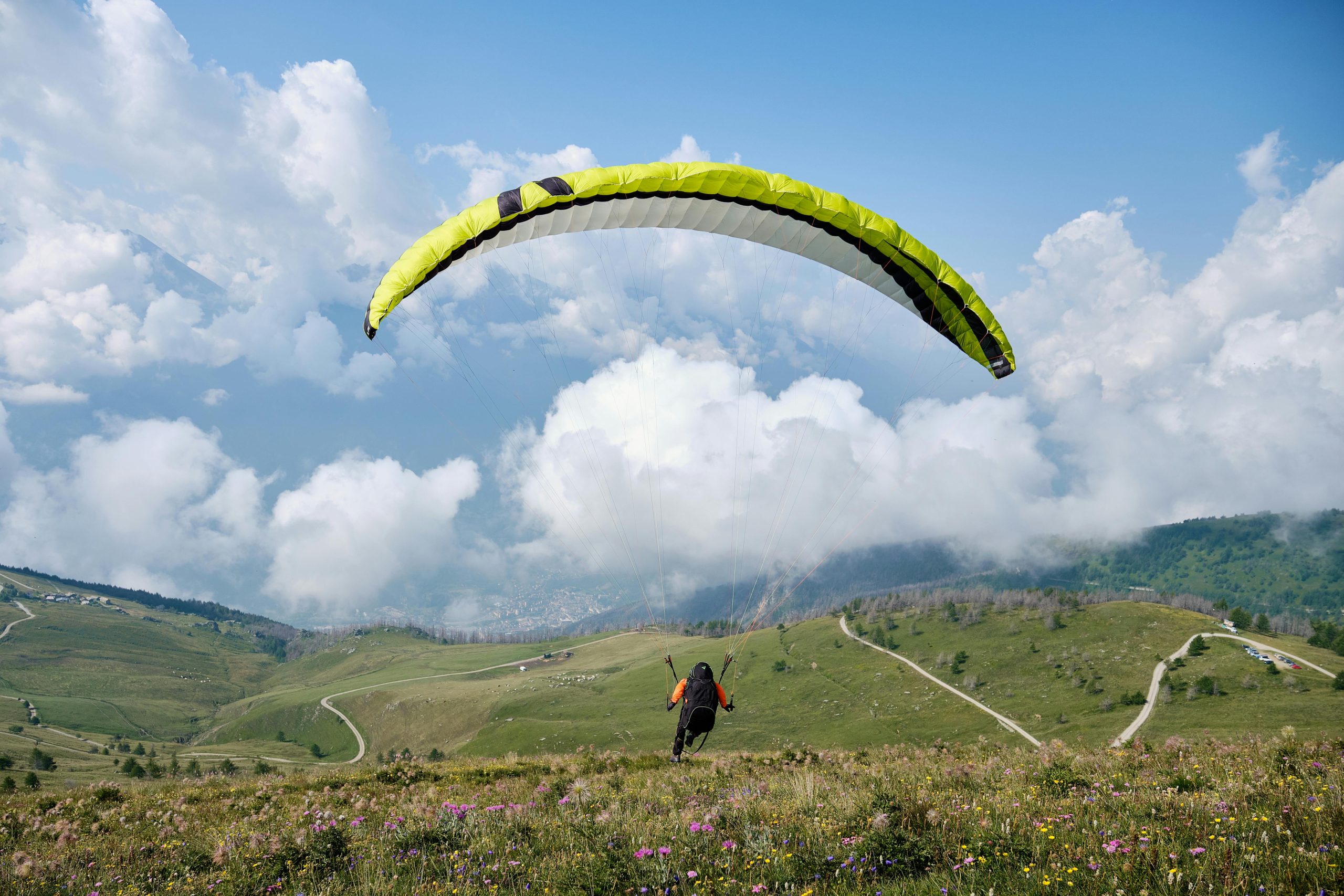
One key difference between paragliding and parasailing lies in their fundamental nature and execution. Paragliding is an adventure sport where you use a foot-launched wing to soar through the skies, utilizing thermal currents for long-distance travel and significant altitude. In contrast, parasailing is a recreational activity where you are towed behind a boat, attached to a parachute-like sail via a tow rope, typically reaching heights around 90-100 meters.
Paragliding requires rigorous training and adherence to safety protocols for solo flights. You control your flight, making it a dynamic and engaging experience. The equipment for paragliding includes a wing, harness, and reserve parachute, all designed for control and safety. Parasailing, on the other hand, does not require any special training for participants. The operator handles the flight, making it a more passive and less demanding experience.
While paragliding offers the ability to perform maneuvers and extend your flight duration, parasailing provides a brief, controlled ride with limited personal control. This contrast in nature and execution highlights the unique appeal and challenges of each activity.
Equipment Needed
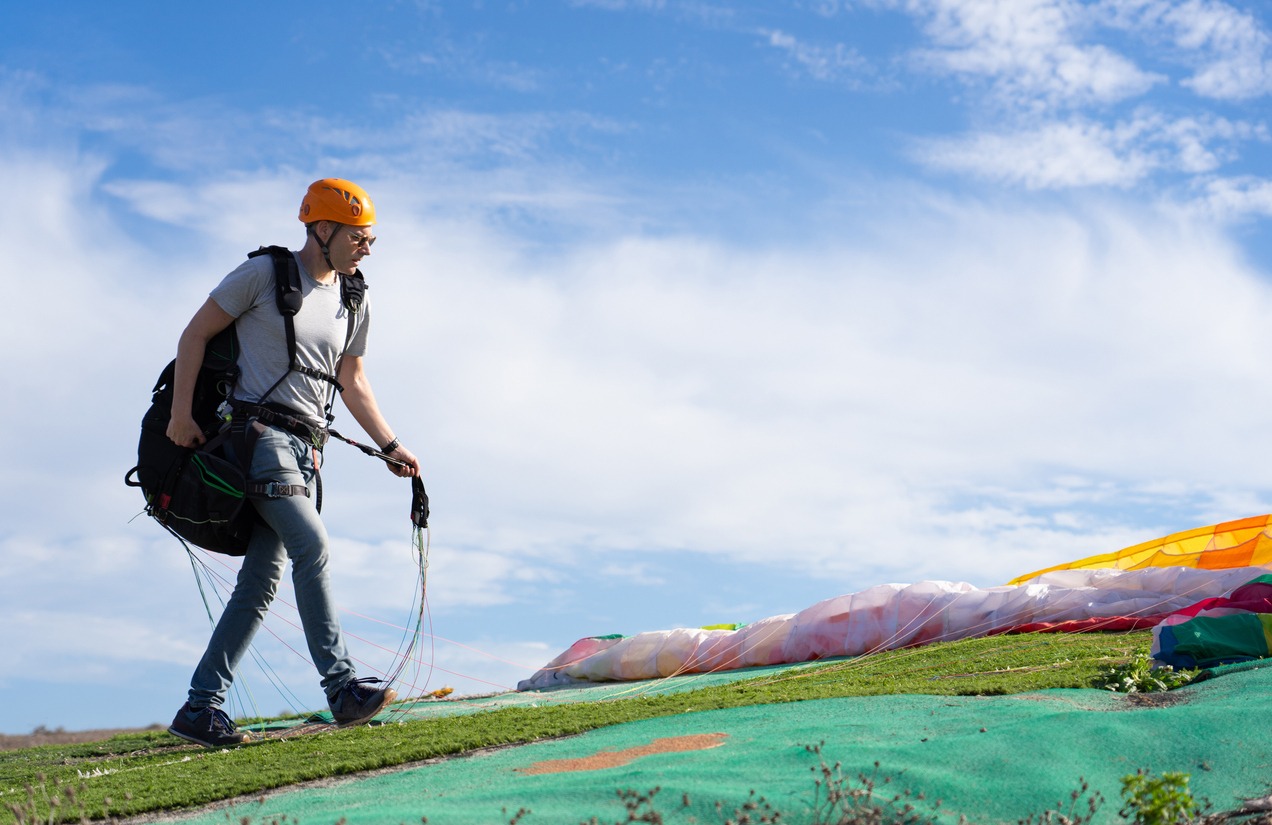
To engage in paragliding or parasailing, you need specific equipment tailored to each activity's unique requirements, ensuring both performance and safety.
For paragliding, your essential equipment includes:
- Wing/Canopy - The primary component, designed as a ram-air airfoil for smooth gliding.
- Harness - Secures you to the wing and provides comfort during flight.
- Reserve Parachute - An essential safety feature for emergencies.
- Specialized Boots - Offer necessary support and protection during takeoff and landing.
- Helmet - Protects your head during flight.
- Variometer - Monitors your altitude.
For parasailing, your equipment revolves around being towed by a motorboat. Key items include:
- Parasail - A round parachute designed specifically for towing.
- Tow Rope - Connects the parasail to the boat, providing lift.
- Motorboat - Requires a minimum horsepower of 90 to generate sufficient lift.
- Helmet - Provides head protection.
- Life Jacket - Ensures safety while airborne.
Each piece of gear is crucial for your safety and enjoyment, whether you're gliding solo in paragliding or being towed in parasailing.
Safety Conditions
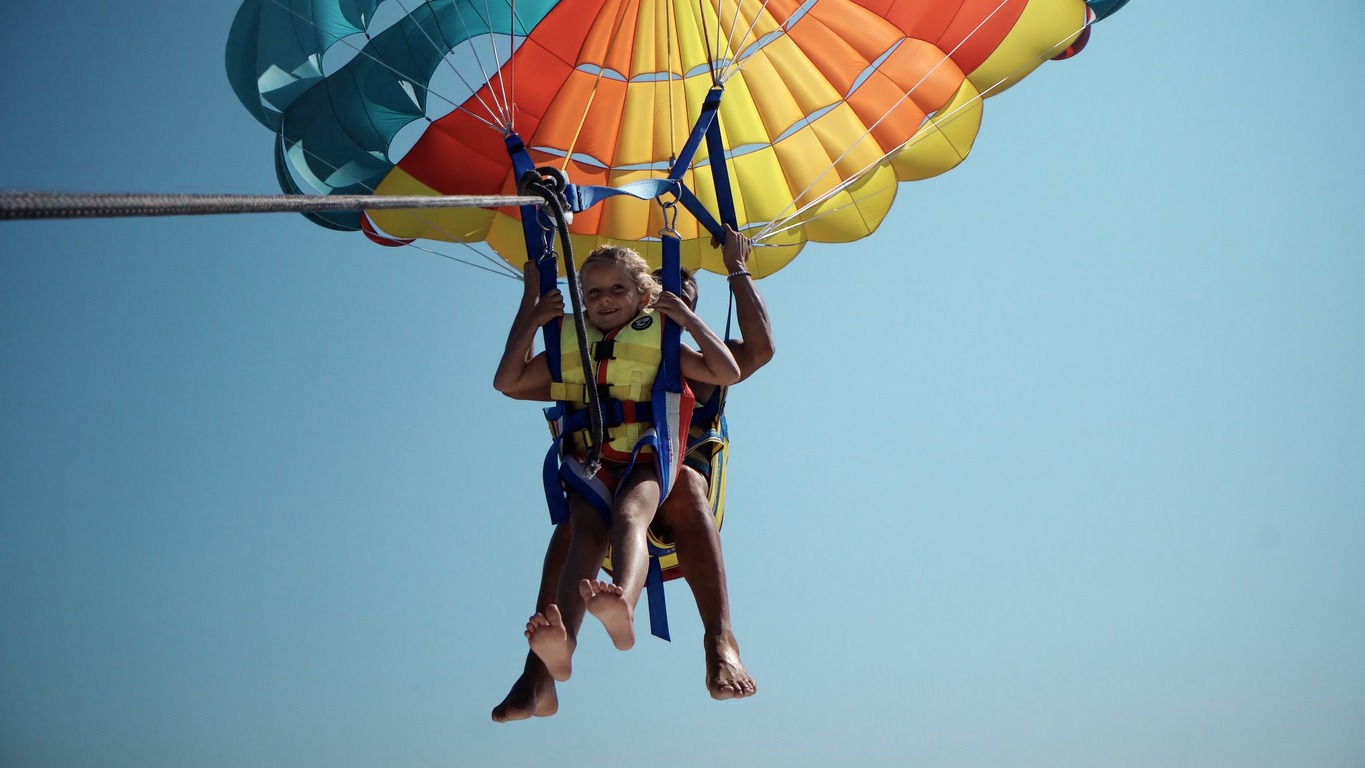
Ensuring your safety in paragliding and parasailing involves understanding and respecting the specific conditions required for each activity. When paragliding, it's crucial to monitor wind limits, with beginners advised to avoid winds exceeding 15 mph and any wet conditions. Conversely, parasailing should not be attempted in winds over 50 mph.
Safety gear is essential in both sports. Paragliding requires a helmet, harness, and reserve parachute. For parasailing, participants must wear life jackets and helmets. Environmental factors are also critical; paragliding can be influenced by cloud cover and thermal currents, whereas parasailing demands calm water conditions to ensure stability during the ride.
Adhering to emergency protocols is imperative. Paragliding pilots need to be familiar with their surroundings and potential hazards. Parasailing operators must prioritize passenger safety during towing and be prepared for emergencies. Equipment checks are equally important in both activities. Before paragliding, thoroughly inspect your gear, and parasailing operators must ensure all equipment meets safety standards.
Historical Background
Understanding the safety conditions for both paragliding and parasailing underscores the importance of adhering to the unique requirements of each sport. Both activities trace their origins to advancements in parachute technology. In the 1960s, Pierre M. Lemoigne's development of the paracommander was instrumental in the foundation of modern paragliding.
The first documented parasailing flight occurred in 1961, spearheaded by Colonel Michel Tournier, who innovatively towed a parachute behind a vehicle. This milestone marked the inception of parasailing as a distinct activity. By 1963, Jacques-Andre Istel had commercialized parasailing by licensing the design of the 24-gore parachute.
Key milestones in the evolution of these sports include:
- 1960s: Introduction of paragliding with Lemoigne's paracommander.
- 1961: Tournier's pioneering parasailing flight.
- 1963: Istel's commercialization of parasailing.
- 1980s: Paragliding gains recognition as a sport, thanks to advancements in canopy design.
While paragliding, which emphasizes free flight and thermal currents, was recognized as a sport in the 1980s, parasailing, typically involving being towed by a boat, carved out its own niche. Both sports have since evolved independently, each with its own set of practices and safety protocols.
Learning to Fly

When learning to fly, paragliding requires thorough training to master weather conditions, wing control, and proper launching techniques. This training is typically provided through lessons or tandem flights. Safety is paramount, necessitating essential gear such as helmets, harnesses, and reserve parachutes. In contrast, parasailing requires no prior training as you are a passenger towed by a boat, relying on the boat operator's expertise for a safe experience.
Essential Training Requirements
To begin your paragliding journey, you must undergo comprehensive training that includes weather analysis, flight techniques, and essential safety protocols. This extensive training ensures you acquire the skills necessary for a safe and enjoyable experience. Here's what your paragliding training typically encompasses:
- Weather Analysis: Understanding wind patterns and weather conditions is crucial for safe flights.
- Flight Techniques: You'll learn how to launch, control, and land your paraglider effectively.
- Safety Protocols: Mastering emergency procedures and safety checks is vital for your protection.
- Practical Flights: You'll conduct numerous training flights under the supervision of a qualified instructor to refine your skills.
Unlike parasailing, where the operator manages the entire experience and no prior training is required, paragliding demands dedication and practice. If you're not yet ready to fly solo, tandem paragliding flights with an experienced instructor offer the thrill without the need for prior training.
Safety is paramount in both activities, but the expertise required for paragliding is considerably higher. So, if you're committed to learning and earning your paragliding license, prepare for an exciting and educational journey.
Licensing and Certification
Embarking on a paragliding adventure requires more than just enthusiasm; it necessitates obtaining proper licensing and certification. To fly solo, you'll need to complete specific training, typically involving 15-20 hours of instruction, and pass a written exam. Many countries mandate that paragliders obtain a license through recognized organizations, with the International Pilot License (IPPI) being a common certification standard. This ensures you possess the necessary skills to fly safely and understand critical aspects like weather conditions.
If you're new to the sport and not ready for solo flights, tandem paragliding offers a great alternative. In tandem paragliding, you can experience the thrill of flight without needing prior training or certification, as you'll be flying with an experienced instructor. This is an excellent way to get a feel for the sport and decide if you want to pursue further training.
On the other hand, parasailing is much more accessible, requiring no licensing or prior training. The operator handles all aspects of the flight, making it suitable for people of all ages and skill levels. While parasailing is easy to try, paragliding emphasizes the importance of proper training and certification for a safe and enjoyable experience.
Choosing Between the Two
When deciding between paragliding and parasailing, the experience you seek will guide your choice.
If you're looking for an engaging and dynamic adventure, paragliding is ideal. This activity allows for significant altitude and long-distance travel, providing a controlled flying experience where you can navigate air currents. However, it requires substantial training and a license for solo flights. Safety measures include specialized equipment like reserve parachutes and helmets, ensuring preparedness and self-reliance.
Alternatively, parasailing offers a more casual and passive experience. Tethered to a boat, you'll soar above the water for about 15 minutes without needing prior training. Safety measures are straightforward, usually involving life jackets and helmets. It's an accessible and cost-effective option, averaging around $55 per ride compared to the $4,000 to $5,000 investment in paragliding gear.
Here's a quick comparison:
- Paragliding: Engaging, controlled, requires training, robust safety measures.
- Parasailing: Short, passive, no training needed, basic safety gear.
- Cost: Paragliding gear is expensive; parasailing is affordable.
- Flight Control: Paragliding offers dynamic maneuvers; parasailing is tethered.
Your choice ultimately depends on whether you prioritize an adrenaline-fueled, hands-on experience or a leisurely, hassle-free ride.
Popular Locations
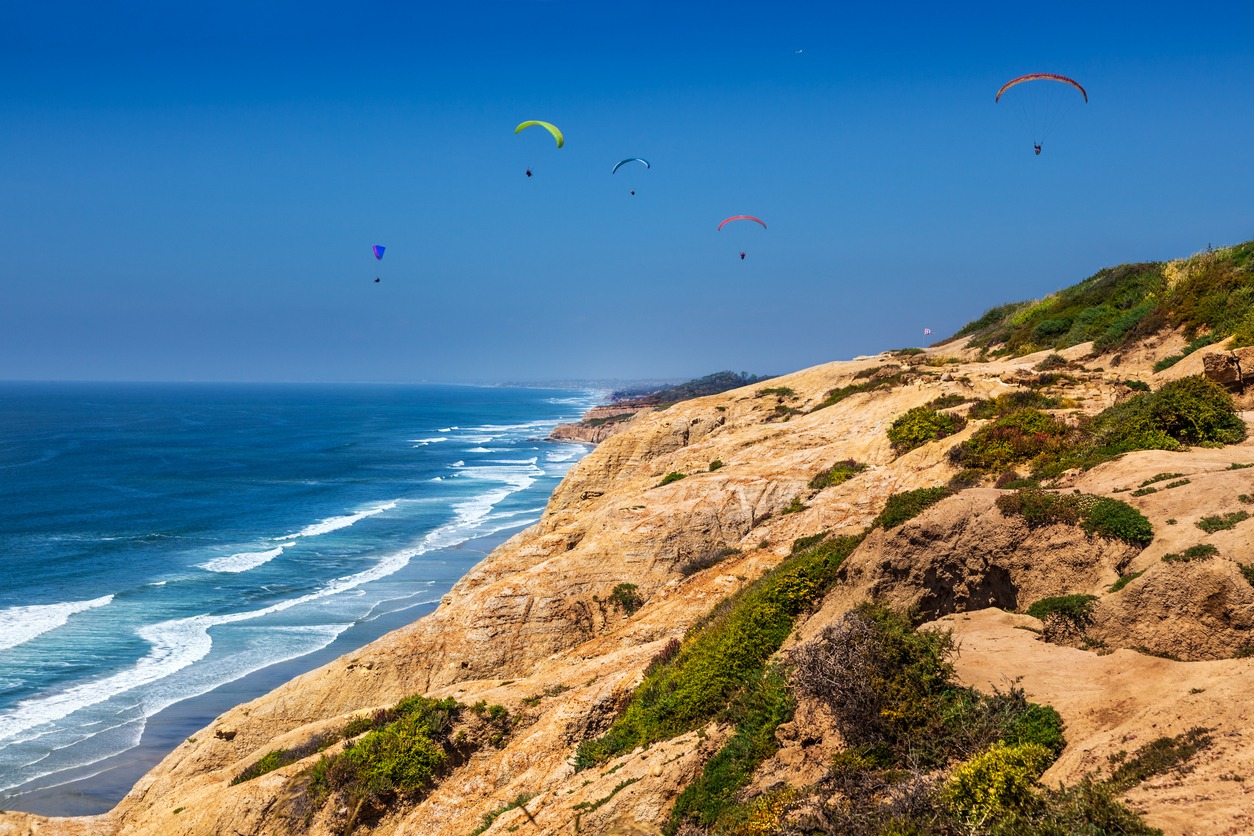
When you've decided if paragliding or parasailing suits your adventure needs, the next step is picking a location to maximize your experience. For paragliding, several popular destinations stand out.
In California, Torrey Pines State Park is renowned for its coastal flights and stunning ocean views. You can even take lessons while enjoying the scenery. In Hawaii, Polipoli Flight Park near Haleakalā Volcano offers year-round flying conditions and picturesque landscapes.
For those seeking affordability and reliable winds, Utah is an excellent choice. Birdman Academy provides lessons and guided flights in multiple locations. Brazil is another hotspot, with Tijuca National Park offering flights to São Conrado Beach and breathtaking views of iconic landmarks like Christ the Redeemer.
Hong Kong also boasts impressive paragliding spots. From Dragon's Back to Sunset Peak, you'll get stunning views over natural reserves, all easily accessible from nearby MTR stations.
Here's a quick comparison:
| Location | Highlights |
|---|---|
| Torrey Pines State Park | Coastal flights, ocean views |
| Polipoli Flight Park | Year-round flying, Haleakalā Volcano views |
| Utah | Predictable winds, affordability, Birdman Academy |
With so many amazing spots, you're sure to find the perfect paragliding adventure!


